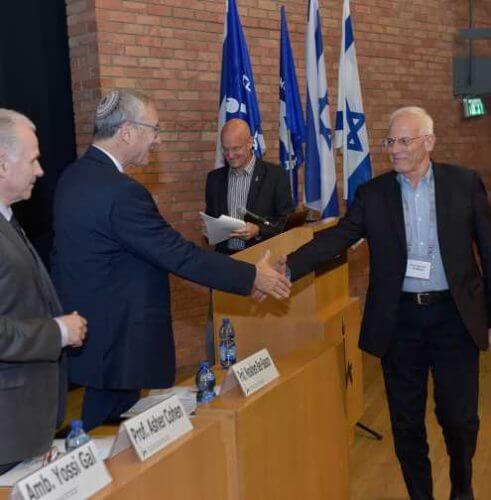The algorithm is based on a unique computerized approach to solving particularly complicated problems, and was developed in the laboratory of Prof. Amiram Goldblum, from the Drug Research Institute of the Faculty of Medicine at the Hebrew University.

Antibiotics developed to treat particularly resistant diseases, molecules that block overreactions of the immune system, molecules that stop the growth of cancer cells by removing excess iron, molecules that may increase the digestion of fats - all these and more have been discovered in recent years thanks to the development of a unique computerized approach to solving particularly complicated problems , the algorithm called - "Iterative Stochastic Elimination, ISE" which was developed in the laboratory of Prof. Amiram Goldblum, from the Drug Research Institute of the Faculty of Medicine at the Hebrew University. The algorithm was first tested to solve problems in the field of the structure and function of proteins and in the last five years it was used for the discovery of potential drugs and made it possible to shorten the time for drug discovery from years to months and even weeks. The algorithm is different from other algorithms from the family of so-called "heuristic" algorithms - which are based on logic and intuition and offers better solutions than them.
The algorithm produces a model for the targeted activity of small molecules on one or more proteins that have been shown to cause disease. The model is built from a series of "filters" that distinguish between active molecules and those that are inactive or between those that are more active and less active. Each filter is built from a collection of certain physical and chemical properties of the molecules and based on existing information about the activity of certain molecules. The model makes it possible to scan huge libraries of millions of molecules and give each one a "score" according to its suitability for the various filters - thanks to its physical and chemical properties. The best filters are created from the features that remain after the features that do not allow successful discrimination between active molecules and others have been removed in stages from the list of features. After several cycles of filtering and elimination, the number of options is reduced to a million or less and these can be calculated in a few minutes and the solutions sorted from the best solution downwards. Such a model is built in a few hours and the filtering process of millions of molecules can take less than a day! Therefore, it is possible to arrive very quickly - within a few days or a few weeks, to predict the activity of molecules, most of which were not known to have any activity before.
For the development of this algorithm, Prof. Goldblum won an award from the American Chemical Society already in 2000, and since then the algorithm has been used to solve many problems related to understanding various biological systems, such as the flexibility of proteins, encounters between proteins and small molecules, and more. These and other discoveries result from a collaboration between Goldblum's laboratory, where his students run the algorithm to solve various problems, and between laboratories and pharmaceutical companies around the world that test Goldblum's predictions - in Germany, Japan, the USA and, of course, Israel.

The algorithm is used to find the best situations in various problems, the number of possibilities of which is enormous and of magnitudes that do not allow a complete solution even if the world's most powerful computers are added to work together. Problems whose number of possible situations is 10 to the power of 100 and more, are for example problems from the field of land transport and aviation, communication and the biological system. In the field of transportation - finding the alternative ways to get from one point to another using data on the traffic on each of the leading roads between the two points. In aviation - optimal arrangement of landings and takeoffs at busy airports. In communication - a bargain of cheap moves within a complex array of communication cables. And in the biological system, in which we dealt a lot, a meeting between proteins and small molecules while changing the structure of a small molecule and a protein during their approach.
On the basis of Goldblum's algorithm, two companies were founded: the "Pepticum" company, which plans medicines based on known structures of proteins, and the "Sensotrade" company, which in the past has proven its ability in predicting investments in shares in the capital market. Both companies were founded by Prof. Goldblum's students.
For the development that made all of this possible, the prestigious Kay Awards Committee of the Hebrew University decided to award Prof. Goldblum the prize for scientific innovation for 2017.
